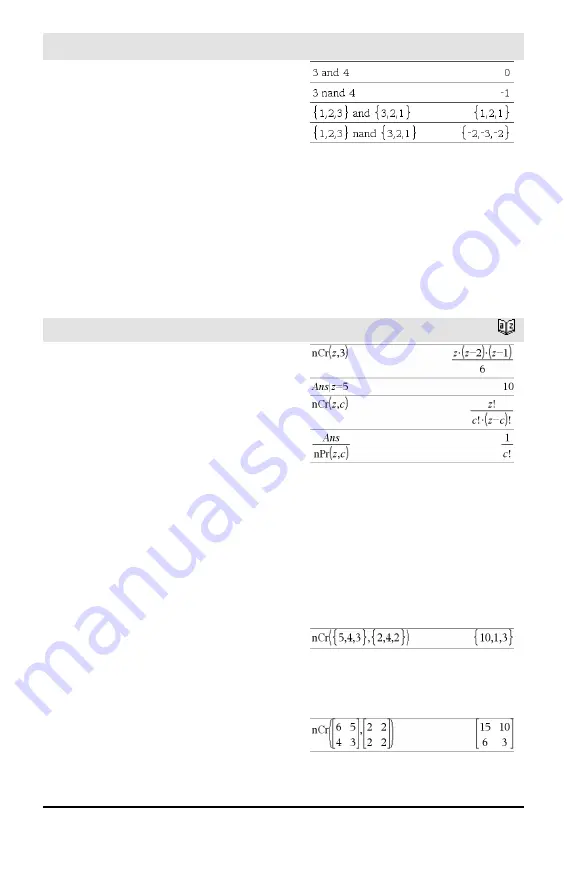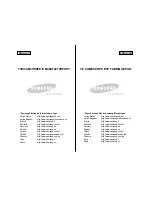
118
Alphabetical Listing
nand
/=
keys
Integer1
nand
Integer2
⇒
integer
Compares two real integers bit-by-bit using
a
nand
operation. Internally, both integers
are converted to signed, 64-bit binary
numbers. When corresponding bits are
compared, the result is 1 if both bits are 1;
otherwise, the result is 0. The returned
value represents the bit results, and is
displayed according to the Base mode.
You can enter the integers in any number
base. For a binary or hexadecimal entry, you
must use the 0b or 0h prefix, respectively.
Without a prefix, integers are treated as
decimal (base 10).
nCr()
Catalog >
nCr(
Expr1
,
Expr2
)
⇒
expression
For integer
Expr1
and
Expr2
with
Expr1
≥
Expr2
≥
0,
nCr()
is the number of
combinations of
Expr1
things taken
Expr2
at a time. (This is also known as a binomial
coefficient.) Both arguments can be
integers or symbolic expressions.
nCr(
Expr
, 0
)
⇒
1
nCr(
Expr
,
negInteger
)
⇒
0
nCr(
Expr
,
posInteger
)
⇒
Expr
•
(
Expr
−
1
) ...
(
Expr
−
posInteger
+1) /
posInteger
!
nCr(
Expr
,
nonInteger
)
⇒
expression
! /
((
Expr
−
nonInteger
)!
•
nonInteger
!)
nCr(
List1
,
List2
)
⇒
list
Returns a list of combinations based on the
corresponding element pairs in the two
lists. The arguments must be the same size
list.
nCr(
Matrix1
,
Matrix2
)
⇒
matrix
Summary of Contents for TI-Nspire CAS
Page 4: ...4 Service and Warranty Information 249 Index 251 ...
Page 248: ...248 ...
Page 250: ...250 ...
















































